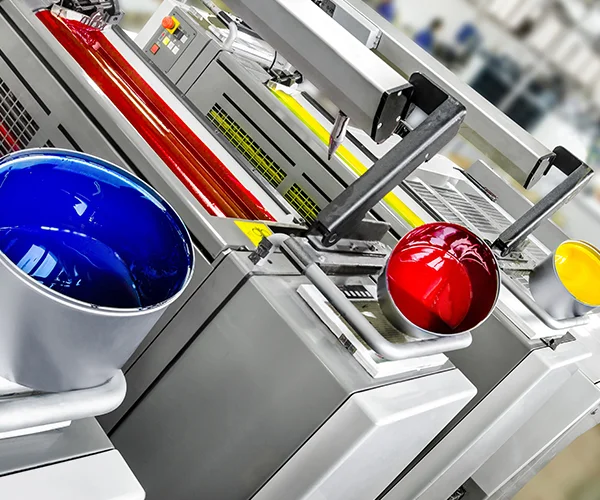- This topic is empty.
-
AuthorPosts
-
2025-07-28 at 4:33 pm #63054
Ink pigments play a crucial role in the creation of vibrant and durable printed materials. These pigments are specifically formulated to meet the demands of ink production, ensuring high-quality prints that retain their color and integrity over time. D-Ray Technology's Ink Pigments are widely used in various high-end printing fields, such as textile printing and dyeing, advertising and artistic creation, bringing users a more delicate and rich color experience and a more lasting printing effect.

Chemical Composition of Ink Pigments
Ink pigments are composed of various chemical compounds that contribute to their unique properties. Broadly speaking, pigments can be classified into two main categories: organic and inorganic.
Organic Pigments
Organic pigments are widely used in ink formulations due to their versatility and excellent performance. They are derived from synthetic organic compounds and offer a wide range of color choices. The chemical structure of organic pigments can be tailored to achieve specific properties, such as enhanced light resistance or improved dispersibility.
Organic pigments typically contain aromatic rings and heterocyclic structures, which contribute to their color and stability. These pigments are often stabilized with additional compounds to prevent degradation and improve durability.
Inorganic Pigments
Inorganic pigments, on the other hand, are derived from natural minerals or synthetically produced inorganic compounds. They are known for their high stability and resistance to light and chemicals. Common inorganic pigments used in inks include oxides, sulfides, and carbonates.
Inorganic pigments generally have a simpler chemical structure compared to organic pigments, which can make them more cost-effective to produce. However, they may offer a more limited color palette and may not always provide the same level of performance as organic pigments in certain applications.
Performance Analysis of Ink Pigments
The performance of ink pigments is critical to the quality of the printed material. Key factors that influence the performance of ink pigments include their dispersibility, light resistance, and chemical resistance.
Dispersibility
Dispersibility refers to the ability of the pigment particles to be uniformly distributed throughout the ink. Good dispersibility is essential for achieving smooth and uniform prints. If the pigment particles are not well-dispersed, they can agglomerate and cause print defects such as streaking or mottling.
To improve dispersibility, D-Ray Technology often use dispersing agents, which are surfactants that coat the pigment particles and prevent them from aggregating. The choice of dispersing agent can significantly affect the dispersion stability and print quality of the ink.
Light Resistance
Light resistance, or fade resistance, is the ability of the pigment to retain its color intensity when exposed to light. Pigments that are not light-resistant can fade over time, especially when exposed to direct sunlight or UV radiation.
Organic pigments, due to their complex chemical structure, often offer better light resistance than inorganic pigments. However, even within the category of organic pigments, there can be significant differences in light resistance depending on the specific compound and its stabilization method.
D-Ray Technology often test the light resistance of their pigments using accelerated aging tests, such as exposure to UV light or intense heat, to predict how well the ink will perform in real-world conditions.
Chemical Resistance
Chemical resistance refers to the ability of the pigment to resist degradation when exposed to various chemicals, such as acids, bases, or solvents. Pigments that are not chemical-resistant can change color or lose their integrity when exposed to these substances.
Organic pigments, while offering excellent light resistance, may not always be as chemical-resistant as inorganic pigments. Inorganic pigments, due to their stable chemical structure, are often more resistant to chemical attack.
However, D-Ray Technology can enhance the chemical resistance of organic pigments by incorporating stabilizing compounds or modifying their chemical structure. This can help to balance the need for good light resistance with the need for chemical stability in certain applications.
Ink Pigments: The Selling Points
Ink pigments offer several key selling points that make them ideal for use in ink formulations:
Rich Color Choices
Organic pigments provide a wide range of color choices, enabling D-Ray Technology to create inks that match specific brand colors or achieve unique visual effects. This versatility is particularly important in the graphic arts and packaging industries, where color accuracy and creativity are critical.
Excellent Performance
Ink pigments are formulated to offer excellent performance in terms of light resistance, chemical resistance, and dispersibility. This ensures that printed materials retain their color and integrity over time, even when exposed to harsh conditions.
Cost-Effective Production
While high-performance pigments may have a higher initial cost, their durability and versatility can lead to cost savings in the long run. By reducing waste and minimizing the need for reprints, D-Ray Technology can pass these savings on to their customers.
Conclusion
Ink pigments are a crucial component of the printing industry, offering a wide range of colors and excellent performance in terms of light resistance, chemical resistance, and dispersibility. Organic pigments, in particular, are widely used due to their versatility and ability to meet the specific needs of various applications.
By understanding the chemical composition and performance analysis of ink pigments, D-Ray Technology can create high-quality inks that meet the demands of their customers while maximizing cost-effectiveness and sustainability. With continuous advancements in pigment technology, the future of ink pigments looks promising, with even more innovative and durable options on the horizon.
https://www.draycolor.com/chemical-composition-and-performance-analysis.html
http://www.draycolor.com
Zhejiang D-Ray Technology Co., Ltd -
AuthorPosts
- You must be logged in to reply to this topic.